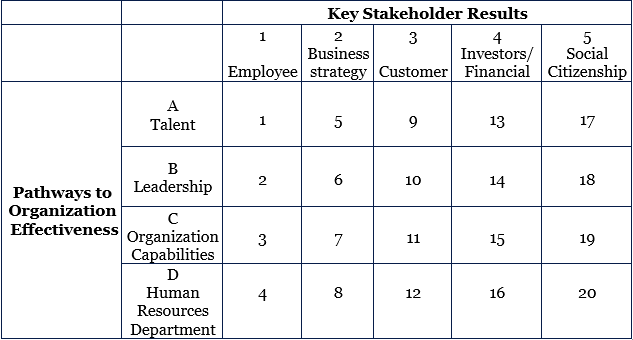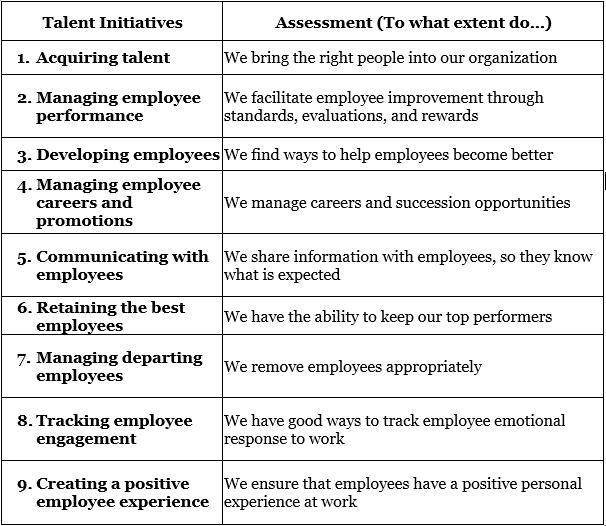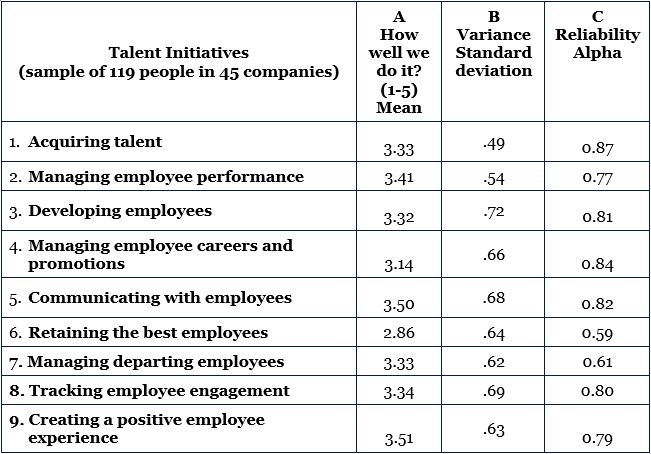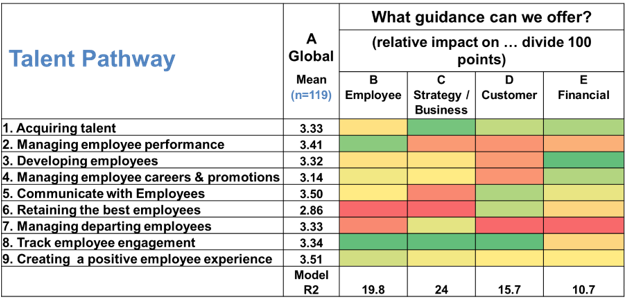[ad_1]
We know it matters. Some go to war for it. Professional sports teams draft for it. Actors and musicians audition to show they have it. Others consider it the ultimate solution and try to manage it. Agents contract for it. Organizations build plans to leverage it. Some are innately endowed with it while others strive diligently to earn it. All try to grow it. Talent. Put simply, your talent strategy matters.
Talent has been the hallmark of HR for decades. A multitude of programs and initiatives and untold millions have been invested to attract, retain, and upgrade talent. Yet, how do business and HR leaders know which talent initiatives deliver results?
We have spent the last 18 months creating an Organization Guidance System (OGS) that informs the impact of four organization effectiveness pathways on five key results (see Figure 1):
Figure 1
Key Results- pathways to organization effectiveness

In this article, we report the findings of our pilot study about which talent initiatives drive key outcomes.
Step 1: Identify and measure key outcomes
Prioritizing talent initiatives starts with identifying desired results. The columns in Figure 1 suggest five stakeholder results that a company may prioritize. Instead of talking about an innovative talent initiative, HR professionals should start talent discussions by identifying desired results that matter to business leaders.
Step 2: Distill and measure key talent strategy initiatives
There are innumerable initiatives that could be done to improve talent. In our talent research and work, we identify three major talent domains (competence, commitment, and contribution or experience). Within each of these three domains, we identify a number of talent initiatives. For example, in the book Talent Accelerator. we identify 13 talent initiatives to increase competence; in our engagement research, we identify sevem practices that make up VOI2C2E (Vision, Opportunity, Incentives, Impact, Community, Communication, and Entrepreneurship); and in Why of Work we identify seven practices to increase contribution or experience.
Based on this work, we identify 18 talent initiatives we can assess. From our pilot study, we determined that these 18 talent initiatives could be distilled into 9 initiatives that an organization could invest in (see Figure 2). We created a 36-item index (four items for each of the nine initiatives) to determine the extent to which each of the nine talent initiatives exist in an organization.
Figure 2:
Nine primary talent strategy initiatives

Step 3: Report status of talent challenges
We collected data on the how well an organization performs on these nine talent initiatives (see Figure 3). This figure reports the overall mean (column A), variance (column B), and reliability (column C) of the measures of these nine initiatives.
This figure indicates which of the nine initiatives are better done and which score lower. The results also confirm that these are valid measures of the nine dimensions.
Most talent research ends by showing global averages and comparing them to the scores in column A.
Figure 3:
Talent initiatives: basic statistics

Step 4: Report guidance on talent practices
To move from these talent strategy descriptions (Figure 3) to prescriptions, we offer guidance in Figure 4. This figure shows the relative impact of each of the nine initiatives on four outcomes we measured in the pilot (columns B, C, D, and E). We used proprietary analytics (variance decomposition) to understand how different talent initiatives will deliver different results (note: in the pilot we focused on four results – we have now added a fifth, social citizenship).
Figure 4
Talent guidance:
Which talent initiatives deliver which results

The findings in Figure 4 dramatically shift the discussion of talent from what is done to what should be done. Some findings include:
- In general, the talent activities with the most overall impact on results are acquiring the right people and tracking their employee engagement. The overall least impact is removing people
- Employee results increase the most through tracking employee sentiment and managing performance
- Business strategy results are most accomplished through acquiring the right people and tracking their engagement
- Customer results are most impacted by tracking employee engagement, communicating with employees, retaining the best employees, and acquiring the right employees
- Financial results are most impacted by developing employees, acquiring employees, and managing careers and succession.
Implications
The implications of this talent strategy guidance are profound. Depending on the results an organization seeks, business and HR leaders can now provide guidance on where to focus talent initiatives. In Figure 1, we show four pathways (talent, leadership, organization, and HR). We will report the pilot results of these other three pathways in future blogs. This OGS is free to anyone. Simply visit www.rbl.ai to get started.
Subscribe to HRD Connect for daily updates on the future of work, including thought leadership, video interviews, the HRD Live Podcast and more.
[ad_2]
Source link






